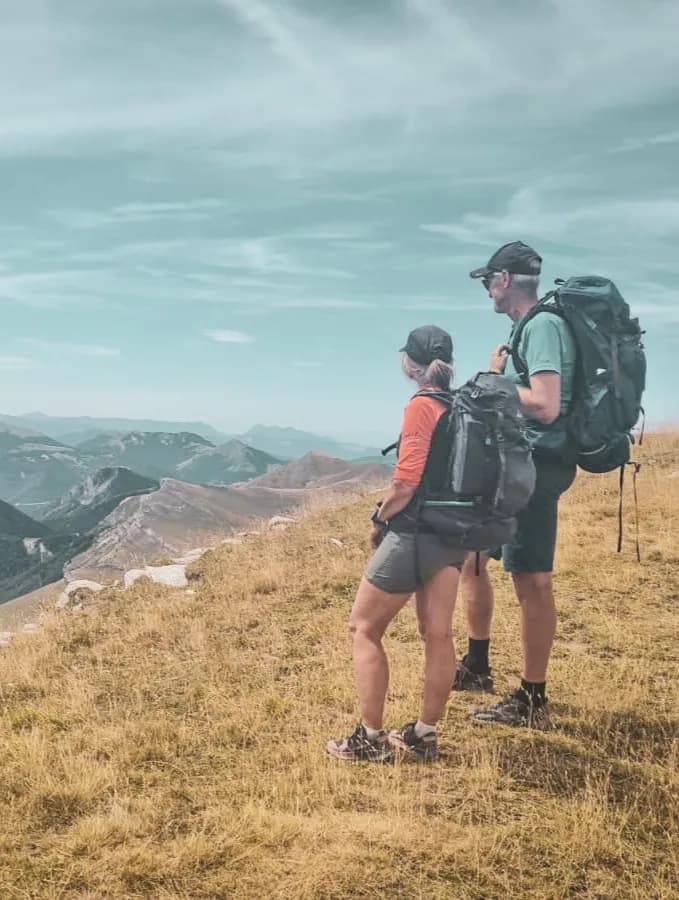How to reach Lapland by train to see the northern lights
Plan your train journey to the Northern Lights in Lapland (Sweden, Norway, and Finland). Discover our tips, routes, and Wildhartt’s expeditions!

Traveling by train to the Northern Lights means combining comfort, relaxation, and sustainable choices. While flights and car journeys can be stressful and rushed, the train offers a slow and peaceful immersion into Arctic landscapes: snowy forests, frozen lakes, and vast plains unfold before your eyes.
How to start your train journey to the northern lights from Brussels or Amsterdam
A train trip to the Northern Lights is entirely possible from Belgium or the Netherlands. Thanks to a fast and comfortable railway network, you can travel at your own pace toward the magical landscapes of Sweden, Finland, or Norway.
To Swedish Lapland
Brussels/Amsterdam → Hamburg
Take an ICE or Intercity train via Cologne to Hamburg (approx. 5–6 hours).
Hamburg → Stockholm
Continue with the Snälltåget night train to Stockholm – both comfortable and eco-friendly.
Stockholm → Kiruna/Abisko/Narvik
Take the SJ night train to Kiruna, Abisko, or Narvik. This is one of Europe’s most scenic rail routes.
📍 Abisko is known for having the clearest skies in Lapland – ideal for aurora watching.
To Finnish Lapland
Brussels/Amsterdam → Hamburg → Copenhagen
Travel via Hamburg and across the Øresund Bridge to Copenhagen.
Copenhagen → Stockholm → Helsinki
Reach Helsinki by train + ferry combination.
Helsinki → Rovaniemi/Kemijärvi
Take the VR night train to Finnish Lapland.
🎄 Rovaniemi, home of Santa Claus, is also a prime aurora destination.
To Northern Norway
Brussels/Amsterdam → Hamburg → Oslo
Travel via Hamburg and Gothenburg to Oslo, with a possible overnight stay.
Oslo → Bodø → Narvik
Take the Dovrebanen and Nordlandsbanen lines to Bodø, then travel on the Ofotbanen to Narvik.
🚎 Narvik is one of the northernmost train-accessible destinations in Europe.
These routes can be done independently. At Wildhartt, we don’t organize the train journeys, but we strongly encourage our travelers to choose this sustainable option. We’re happy to help you plan the most efficient and eco-friendly route to your expedition's starting point.
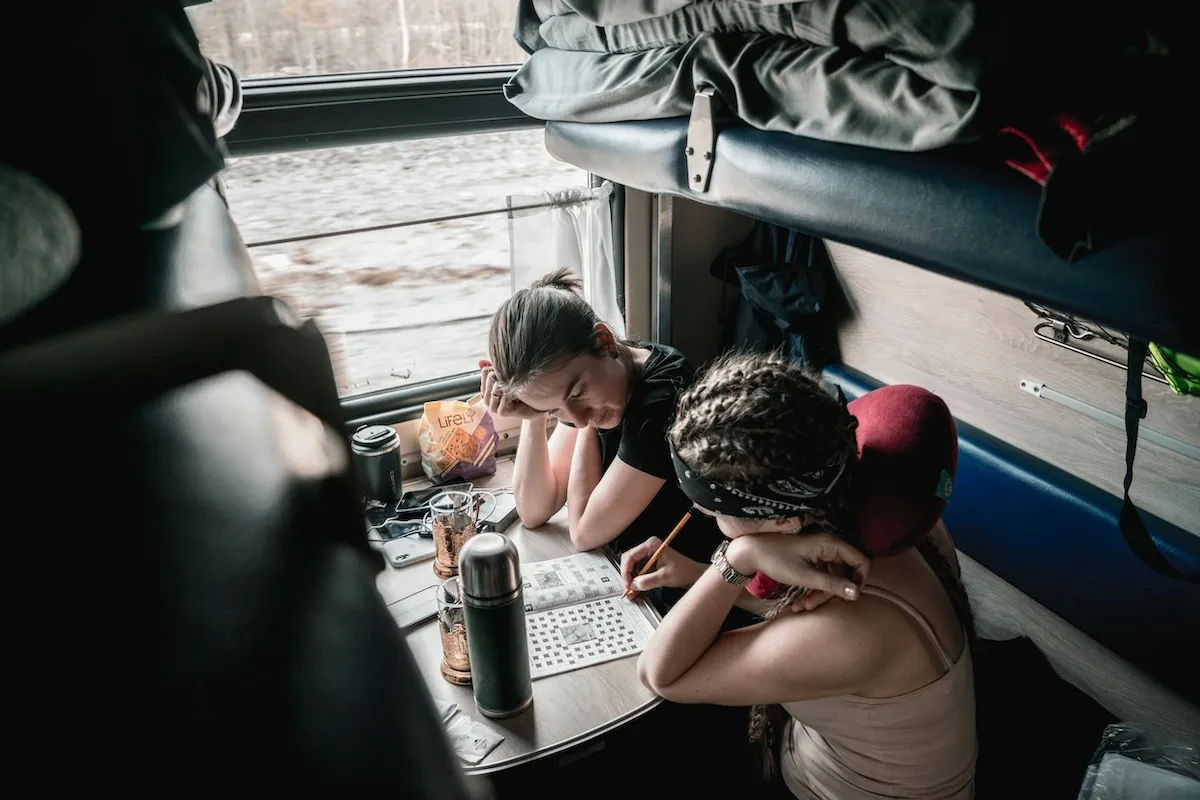
Sustainable Travel and Unique Experiences
Train travel is one of the most environmentally friendly ways to explore the North. In Sweden, Norway, and Finland, electric lines significantly reduce your carbon footprint. On long routes, enjoy the comfort of spacious, quiet compartments, often with sleeper cabins.
- Scenic views day and night across Arctic landscapes
- Fewer transfers to reach remote destinations
- Positive impact: choosing rail helps preserve fragile ecosystems
Wildhartt does not organize train transport, but our expeditions in Lapland are easily accessible via these sustainable routes. We provide travelers with the info they need to combine responsible travel with immersive nature experiences.
Best Time to See the Northern Lights by Train
Timing is crucial to maximize your chances of seeing the aurora. Each Nordic country has ideal months for visibility.
Recommended Seasons and Months
The Northern Lights season runs from late September to late March. The most favorable months are October, February, and March, because:
- nights are long, but the weather is more stable than in December/January
- snow conditions are usually excellent
- in March, milder temperatures often coincide with clearer skies
Country-Specific Factors
- Sweden: Kiruna and Abisko have dry weather and long nights (October–March)
- Norway: Narvik is far north and easily reachable by train (November–March)
- Finland: Rovaniemi and Kemijärvi are popular in December/January, though auroras remain visible through March
Use tools like NOAA Aurora Forecast to track solar activity and local weather in real time.
Wildhartt schedules its winter expeditions during peak aurora months to optimize observation chances while adapting to local conditions.
How to Plan Your Train Journey North
Planning ahead ensures a smooth, enjoyable, and well-paced experience. Here are key points to consider.
Choose Your Ideal Route
Start by selecting your country of exploration: Sweden, Finland, or Norway. From Stockholm, Oslo, or Helsinki, continue north via day or night trains. Prefer routes with fewer connections for extra comfort.
Book Train Tickets Early
Book early through official sites like SJ.se (Sweden), VY.no (Norway), or VR.fi (Finland). Night trains offer comfort and save time. Check seasonal timetables and choose the most suitable seat or cabin.
Find the Right Accommodation
Near northern train stations, you’ll find cozy lodging: cabins, eco-lodges, or small hotels. Prioritize places with breakfast, local transport, or a sauna.
Prepare Your Travel Documents
- Valid ID or passport
- Check visa requirements (none for EU citizens in Schengen)
- Keep digital backups of all important documents
Practical Tips
- Download railway apps and offline maps
- Bring snacks and a refillable water bottle
- Review baggage rules for your train provider
- Dress in layers to balance train comfort with outdoor chill
At Wildhartt, we guide our participants toward the most suitable rail options to reach the start of their expedition. Your journey becomes part of the experience.
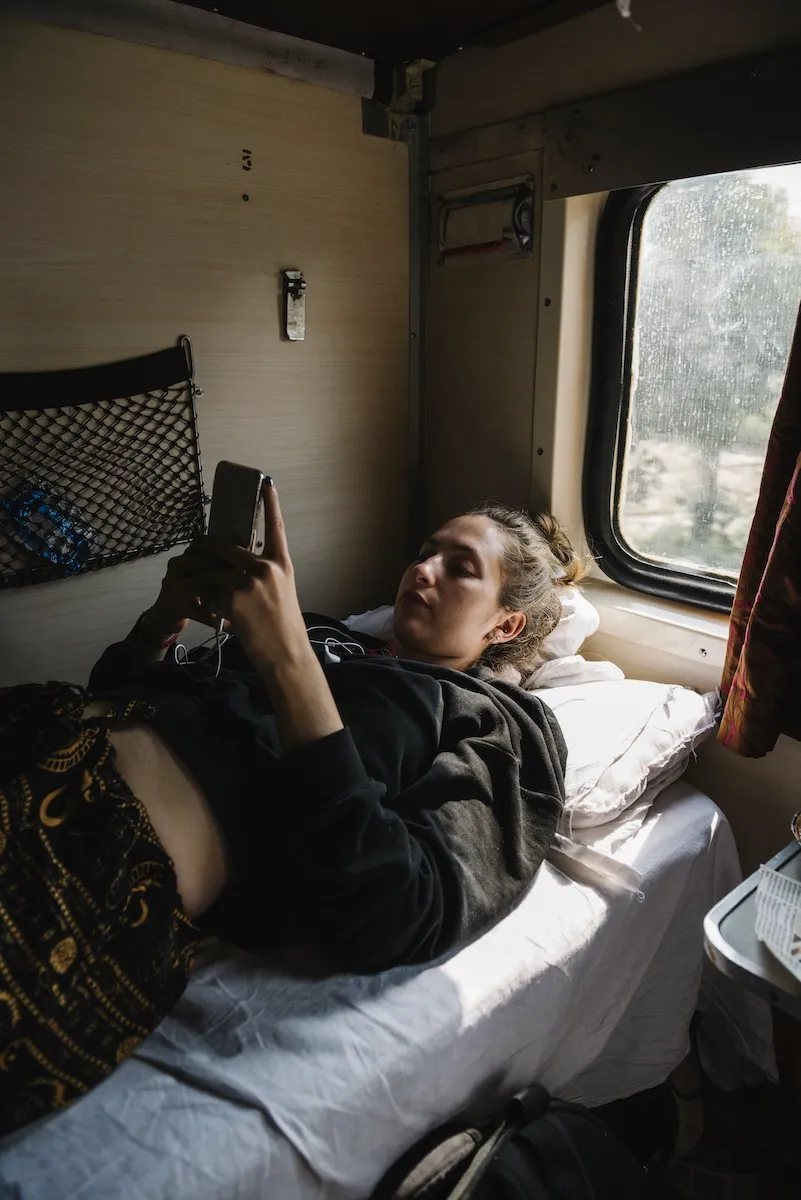
Iconic Train Routes to the Arctic North
Some train journeys are true gems, crossing deep forests, frozen fjords, and endless taiga.
- Stockholm → Kiruna → Narvik (Sweden/Norway): one of Europe’s most beautiful train rides. Stop at Abisko for prime aurora conditions.
- Helsinki → Rovaniemi → Kemijärvi (Finland): perfect for polar nights and a Christmas-like atmosphere.
- Bodø → Narvik (Norway): the Ofotbanen showcases dramatic Arctic mountain scenery near the polar circle.
These routes often align with the departure points of our expeditions. We encourage travelers to incorporate them into their plans.
Must-Have Gear for a Winter Train Trip
Packing the right items is key to staying warm and enjoying your experience.
Clothing
- Thermal base layers (top and bottom)
- Warm fleece or wool sweater
- Waterproof and windproof winter jacket
- Waterproof pants
- Thick wool socks (plus extras)
- Insulated, waterproof boots
- Beanie, scarf or buff, warm gloves or mittens
- Comfortable sleepwear for night trains
Useful accessories
- Lightweight backpack for outings
- Headlamp
- Moisturizer, lip balm, sunglasses (for snow glare)
- Earplugs and eye mask (especially in shared cabins)
- Power bank and spare batteries (cold drains them quickly)
Wildhartt provides a detailed gear checklist tailored to the season and activities of each expedition.
Frequently Asked Questions (FAQ)
When is the best time to see the Northern Lights?
Between 9 p.m. and 2 a.m., in areas with minimal light pollution. Some train routes in Lapland are excellent for aurora spotting.
Do I need to book far in advance?
Yes. Night trains and accommodations fill up quickly during aurora season. We recommend booking several months ahead.
Do I need any special gear?
Warm layers, tripod (for photos), and backup batteries. Crampons or snowshoes may be useful for certain excursions.
Can I really see the Northern Lights from the train
?Yes, if skies are clear and you’re seated on the north-facing side. Remote train stations are also great for stepping out and watching.
Is this trip suitable for everyone?
Absolutely. You can observe passively or join active excursions. Wildhartt adapts its programs to all fitness levels.
Does Wildhartt organize the train travel?
No. Wildhartt doesn’t book train tickets but we offer guidance to help you reach your expedition’s starting point sustainably.
You might also like these adventures …

Stevenson’s trail: hike with a Donkey through the Cévennes
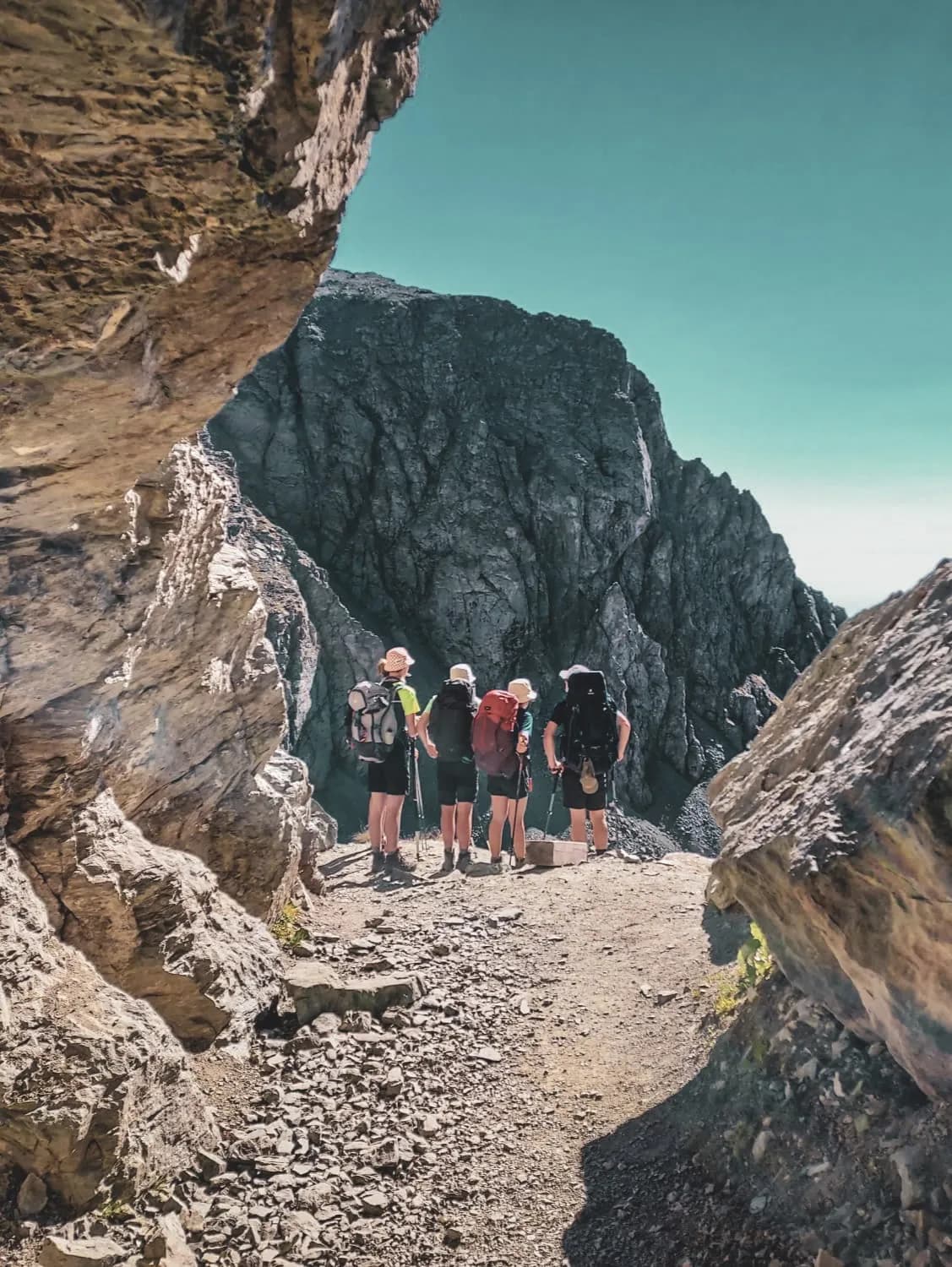
Hut-to-hut trekking around Monte Viso
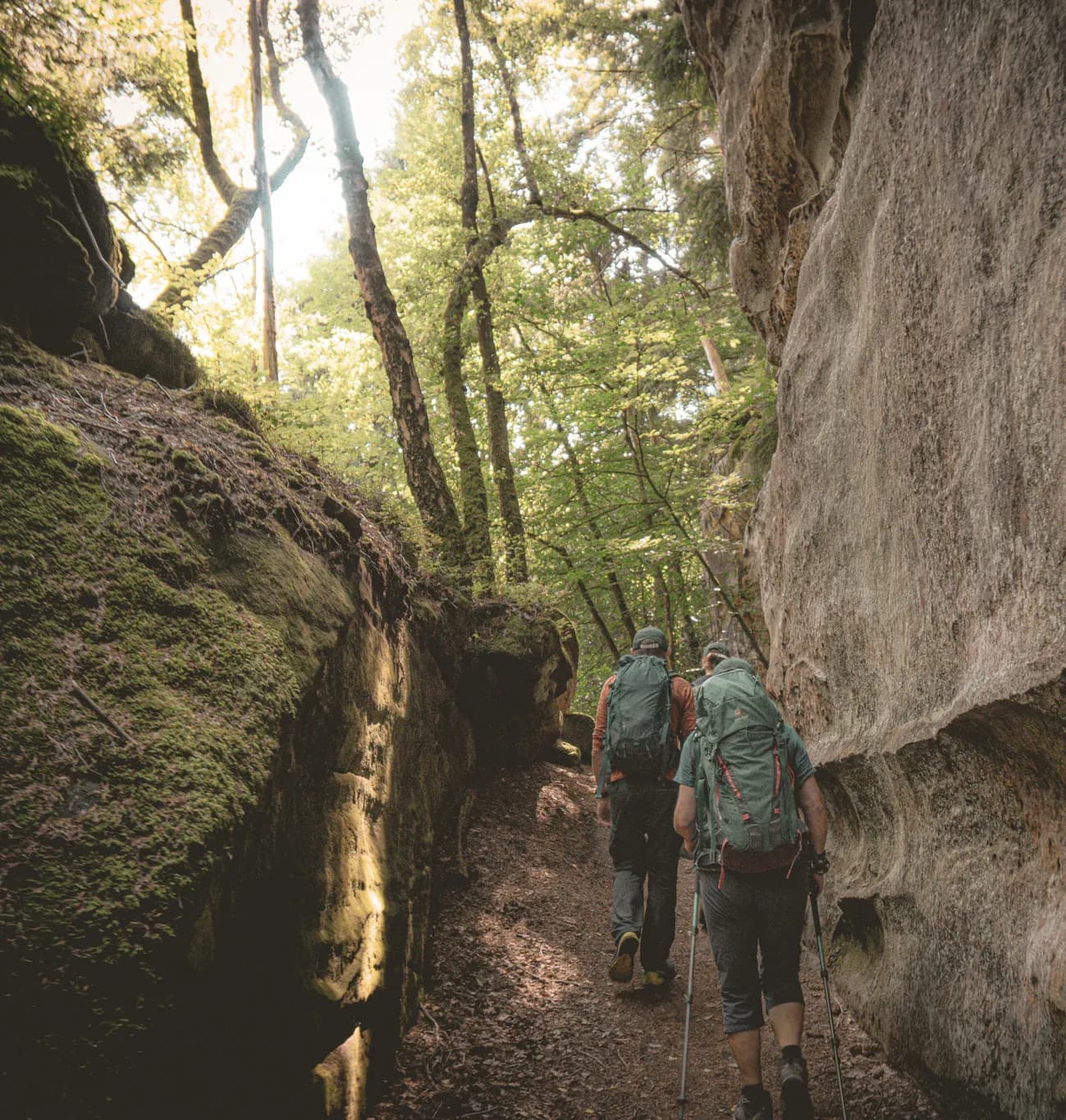
Hiking in Mullerthal: Luxembourg's little Switzerland

Hike the Ecrins with a Donkey by your Side

The king's trail: hiking through Swedish Lapland
